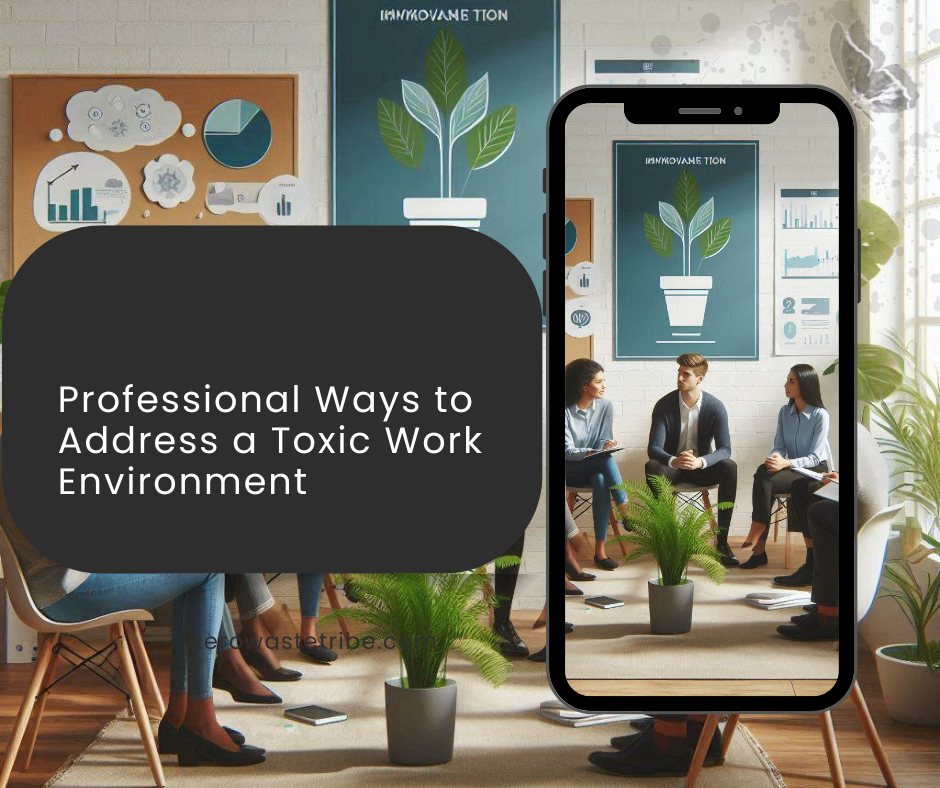According to a Gallup workplace study , nearly 60% of workers have experienced toxic workplace conditions. Understanding how to address these situations professionally can make the difference between career growth and career stagnation.
Via AI and Canva
Identifying Toxic Workplace Behaviors Behavior Type Examples Impact Level Frequency (%) Micromanagement Excessive oversight, constant criticism High 79% Communication Issues Unclear expectations, poor feedback High 82% Workplace Politics Favoritism, cliques, power games Medium-High 74% Bullying Intimidation, public humiliation Severe 48% Discrimination Unfair treatment, bias Severe 42% Work-Life Imbalance Excessive overtime, weekend work Medium 68%
Source: SHRM Workplace Culture Report 2023
Impact on Employee Well-being According to the American Psychological Association , toxic workplaces affect:
Area Impact Percentage Affected Mental Health Anxiety, depression 76% Physical Health Sleep issues, headaches 65% Job Performance Decreased productivity 82% Career Growth Stunted development 58% Personal Life Relationship strain 71% Financial Health Healthcare costs, missed work 45%
Professional Response Strategy Framework 1. Documentation Process What to Document Format Frequency Important Details Incidents Digital log Immediately Date, time, witnesses Communications Email folder Daily Save all relevant emails Performance Spreadsheet Weekly Projects, outcomes Feedback Journal As received Both positive and negative Policy Violations Form As occurred Reference specific policies
2. Communication Response Matrix Situation Professional Response Follow-up Action Timeline Direct Conflict “I understand your perspective. Can we discuss this further?” Schedule private meeting 24-48 hours Unclear Expectations “Could you clarify the specific deliverables?” Document in writing Immediate Micromanagement “I’d like to discuss how we can build trust” Propose check-in schedule Within week Harassment “This behavior is inappropriate and needs to stop” Report to HR Immediate Discrimination “I believe this decision may be biased” Seek legal counsel Within 48 hours
Professional Development During Crisis Skill Enhancement Timeline Timeframe Action Items Expected Outcomes Investment Needed 30 Days Online courses, certifications New skills $500-1000 60 Days Industry networking Connections $200-500 90 Days Portfolio building Tangible results Time investment 6 Months Career coaching Career strategy $1000-2000
Source: LinkedIn Learning Workplace Report
Legal Protection Measures Type of Issue Reporting Timeline Documentation Needed Success Rate Harassment 180 days (EEOC) Incidents, witnesses 65% Discrimination 300 days (State) Pattern of behavior 57% Wage Issues 2-3 years Pay records 71% Retaliation 180 days Causal connection 68%
Source: Equal Employment Opportunity Commission
Professional Boundary Setting Communication Boundaries Channel Professional Limit Example Response Implementation Email 24-hour response “I’ll respond by [specific time]” Auto-responder Phone Business hours only Voicemail message Phone settings Messaging Urgent only after hours “Will address during business hours” Status message Meetings Scheduled only “Please send a calendar invite” Calendar blocks
Workload Management Priority Level Response Strategy Timeline Follow-up High Immediate attention Same day Daily updates Medium Scheduled time Within week Weekly updates Low When available Within month Monthly review
Mental Health Support Resources Resource Type Provider Cost Availability EAP Programs Company-sponsored Free 24/7 Counseling BetterHelp $60-90/week Flexible Support Groups NAMI Free Weekly Crisis Hotline National Crisis Line Free 24/7
Exit Strategy Planning Financial Preparation Timeline Action Item Target Amount Priority 3 Months Emergency Fund 3x monthly salary High 6 Months Job Search Fund $2000-3000 Medium 9 Months Transition Buffer 6x monthly salary High
Professional Transition Checklist Task Timeline Resources Needed Status Resume Update Week 1-2 Professional writer Priority LinkedIn Optimization Week 2-3 Premium account Important Portfolio Creation Week 3-4 Work samples Necessary Reference Collection Week 4-5 Past colleagues Essential
Company Culture Assessment Tools Assessment Area Red Flags Green Flags Weight Leadership Style Micromanagement Empowerment High Communication Secretive Transparent Critical Work-Life Balance Overtime expected Flexible hours Important Growth Opportunities Stagnant Clear paths Significant
Source: Great Place to Work Institute
Additional Professional Resources Industry-Specific Support Industry Organization Resources Contact Technology Tech Workers Coalition Legal aid, networking Online Healthcare ANA Advocacy, support 24/7 Education NEA Legal support, resources Business hours Finance FINRA Dispute resolution Working days
Conclusion Addressing a toxic workplace requires a strategic, professional approach. Use this guide as your roadmap, but remember that every situation is unique. Document everything, maintain professionalism, and prioritize your well-being.
Key Takeaways: Documentation is your strongest ally Professional communication is non-negotiable Build your support network strategically Know your legal rights and timelines Maintain your career development Have an exit strategy ready Prioritize mental health Further Reading and Resources: This guide is updated regularly to reflect current workplace trends and regulations. Last updated: November 2024




